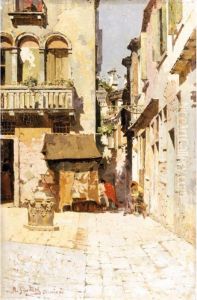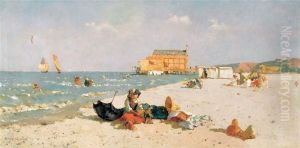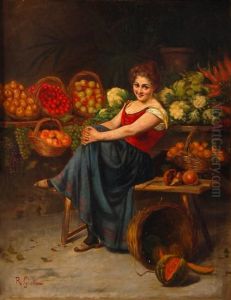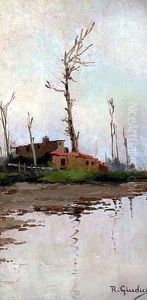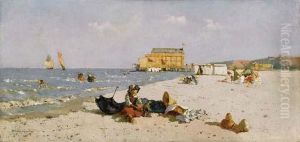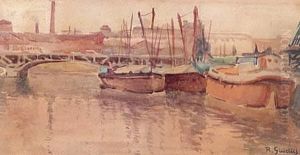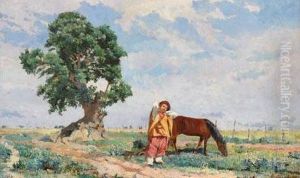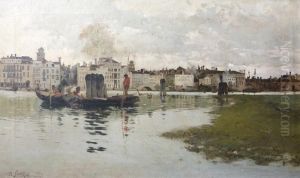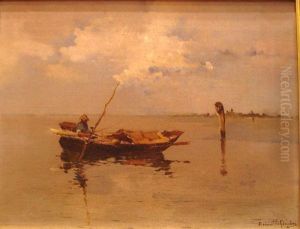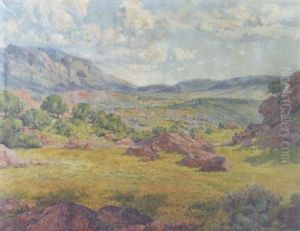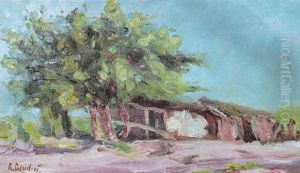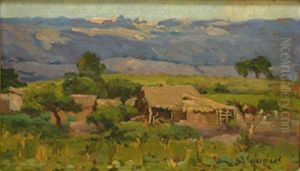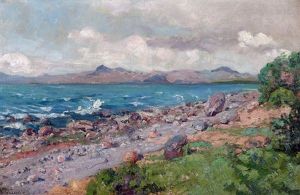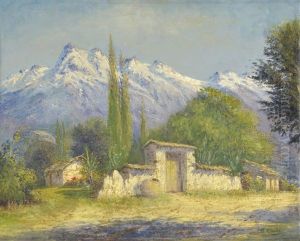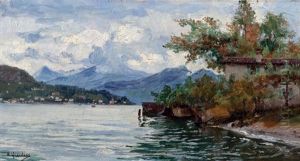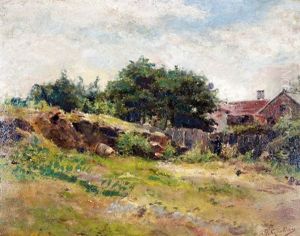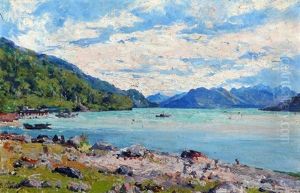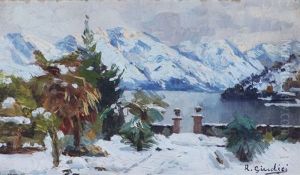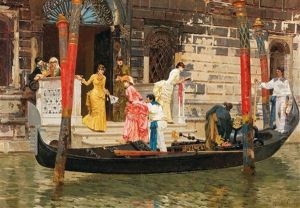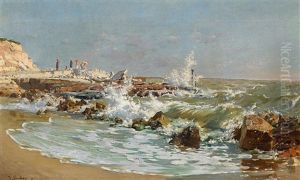Rinaldo Giudici Paintings
Rinaldo Giudici was an Italian painter, primarily known for his landscapes and genre scenes. Born on September 13, 1822, in Castelnuovo di Garfagnana, a small town in the region of Tuscany, he began his artistic education at the Academy of Fine Arts in Florence. Here, he was exposed to the rich tradition of Italian art and the burgeoning Romantic movement, which would later influence his work.
Giudici's early career was marked by his travels throughout Italy, where he drew inspiration from the country’s varied landscapes and the daily life of its people. His paintings often depicted rustic scenes, capturing the charm and simplicity of rural life. Italian genre painting was a popular subject during the 19th century, and Giudici’s works resonated with audiences who were nostalgic for an idealized version of the countryside amidst the rapid industrialization and urbanization of the period.
During the mid-19th century, Giudici's reputation grew, and he participated in several important exhibitions, including those at the Italian National Exhibition in Florence and the Universal Exposition in Paris. His work was well received, and he gained recognition for his ability to evoke emotion and atmosphere through his detailed and evocative landscapes.
In addition to his genre scenes, Giudici was also an accomplished portrait painter. He was skilled at capturing the likeness and character of his sitters, which included prominent figures of his time. Despite his success in portraiture, it is his landscapes and genre paintings that have left a lasting impression on the history of Italian art.
Rinaldo Giudici continued to paint and exhibit his work throughout his life. He passed away on August 21, 1906, in Florence. Today, Giudici's paintings can be found in various art collections, and he is remembered for his contribution to the 19th-century Italian art scene, especially for his charming depictions of the Italian countryside and its inhabitants.
